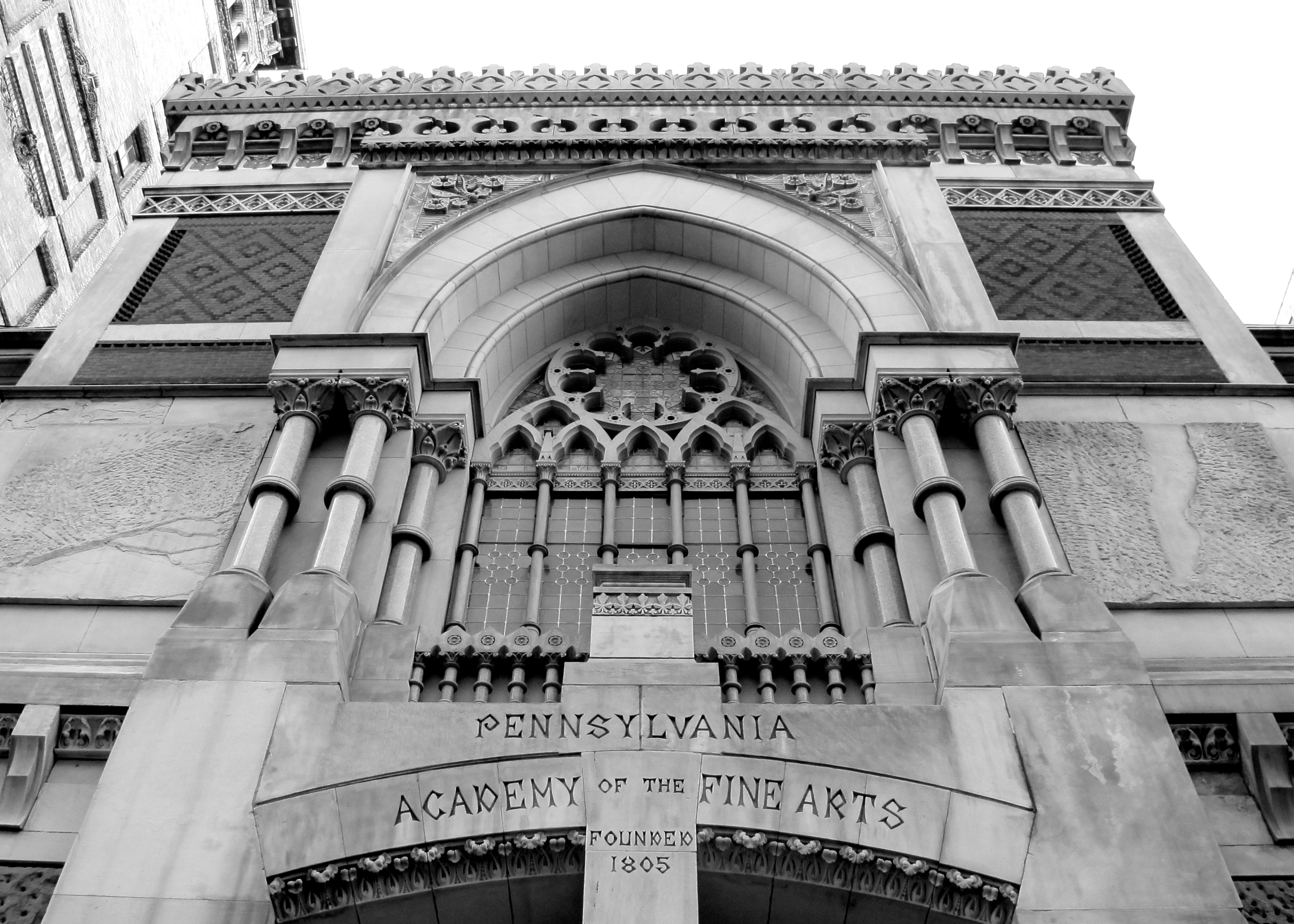November 14: No KOP Rail | First Modern | Purposeful installation and deinstallation

The No KOP Rail campaign adds more substantive objections, Sandy Smith writes. The voice of the opposition, Dan Cowhey, argues that the project “delivers no benefit to current King of Prussia residents who might want to use transit [due to] both the location of the stations and the lack of pedestrian infrastructure in the area.” Mmith covers several more arguments and an alternative that the opponents would be willing to support.
GroJLart, contributing to Hidden City Philadelphia, goes into the sad and beautiful history of the Universalist Church of the Messiah, a Frank Furness designed building that “has fallen into complete obscurity.” The old stone building at Old York Road and West Ruscomb Streets in Logan was built in 1905 for a senior housing and has since been reincarnated as offices, classrooms, library, restaurant, video store, and a video arcade. For more through the eyes of Hidden City, check out Jim Saksa’s review of Joseph E. B. Elliot, Nathaniel Popkin, and Peter Woodall’s new book, Philadelphia: Finding the Hidden City.
Neighbors helping neighbors: local nonprofit Juntos is creating zones as a tool for fast-paced community organizing, Generocity’s Albert Hong writes. Juntos, an immigrants rights organization, fanned out with 150 volunteers this past weekend to train neighbors and register them in the newly formed Community Resistance Zone. The zone requirements that neighbors agree to uphold aim to build support systems to “inform and aid one another in the case of unlawful abuse or raids from ICE and police.”
The mark of a monument removed: Streets Dept covers the life and times of artist Sharon Hayes’ prototype monument, If They Should Ask. Hayes used the installation and deinstallation to highlight that only two of Philadelphia’s more than 1,500 public sculptures are dedicated to real, historic women who lived: Joan of Arc and Mary Dyer, “neither of whom were Philadelphia residents.”
Oh oh, more Frank Furness in the news. Cultural and architectural historian George E. Thomas argues that the Pennsylvania Academy of the Fine Arts is the first modern building in America. In Thomas’s new book, aptly named First Modern, the historian makes the case based on the design’s futurist thinking: the use of steel and iron construction and the installation of modern HVAC and plumbing systems. Thomas emphasizes that save the brick exterior, “every material in this building is made by machine.”
What ho! You and your few select favorite people could win a private tour of one of Frank Furness’s earliest commissions! In support of PlanPhilly’s November membership drive, U3 Ventures, the Preservation Alliance, and Hidden City will take one lucky winner on a private tour of the Consortium building, one of the remaining Furness buildings in Philadelphia. Support PlanPhilly’s public interest journalism and enter the drawing here.
WHYY is your source for fact-based, in-depth journalism and information. As a nonprofit organization, we rely on financial support from readers like you. Please give today.







